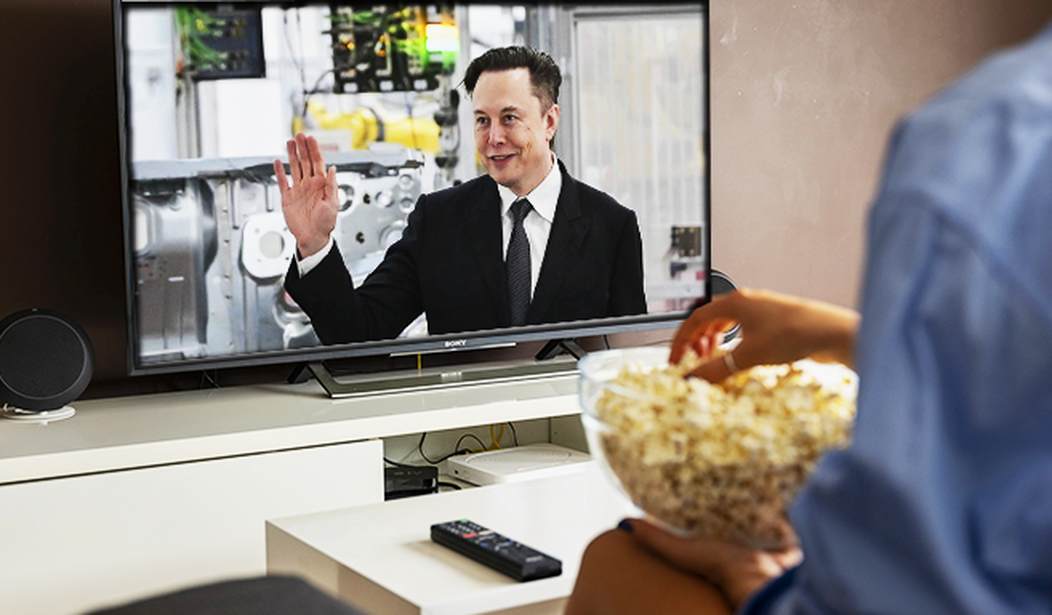Did Elon Musk rescue the public square, or buy a dying duck? Or both? A new report from the Wall Street Journal suggests that Twitter may have entered a financial spiral shortly after Musk’s buyout, but also hints that the spiral may have been short-lived:
Twitter Inc. reported a drop in revenue and adjusted earnings for the month of December, after many advertisers ditched the social-media platform following Elon Musk’s takeover, according to people familiar with the matter.
In an update to investors, Twitter reported a decline of about 40% year-over-year in both revenue and adjusted earnings for the month, the people said.
Chief Executive Mr. Musk, who completed his acquisition of Twitter last October, is working to stabilize the company’s finances, which also have been challenged by high-cost debt. Twitter is responsible for repaying some $13 billion of debt that helped pay for Mr. Musk’s purchase of the company, with annual interest payments estimated at more than $1 billion.
That certainly sounds like a death spiral, but was it? In the first place, this covers a one-month period of time shortly after the acquisition, when advertisers openly declared “pauses” in their engagement on Twitter. Their concern stemmed from Musk’s initial declaration to make the platform more friendly to free speech and open debate, with moderation eventually aiming at a First Amendment model. This was early in that transition, which has grown more clear and sophisticated — although not without its problems still, apparently thanks to multitudes of hooks inside the code to “moderate” debate.
Let’s also not forget that the decisions that led to the 40% fall in revenue for December were likely made immediately at the time of the buyout or shortly thereafter. Advertisers purchase in advance, almost like a futures market in some sense, trying to gauge value well ahead of time. By the time December actually rolled around, Musk had begun demonstrating the value of his ownership by releasing “The Twitter Files” to journalists like Matt Taibbi, Bari Weiss, and Michael Shellenberger. The revelations — which continue through this week, and likely beyond — show that the hysteria about “hate speech” and “disinformation” was a coordinated campaign to censor speech and suppress debate by both government and media organizations — which put advertisers on the wrong side of the fight.
Have they changed their minds? We won’t know for certain until Twitter releases more financials, and now that they are privately owned, Musk has more latitude on releasing that information. Twitter says they’re returning, but we haven’t yet seen hard data on it. Secondary analyses from Pathmatics, cited in the WSJ report, suggest that a large percentage of previous high-ticket advertisers have yet to return. However, Twitter is paying their bills:
The company recently made a first interest payment to a group of banks that lent the $13 billion, the people said.
But even under previous management, Twitter wasn’t exactly a profit machine:
Twitter posted a net loss in eight out of the 10 years from 2012 to 2021 and hasn’t booked an annual profit since 2019.
Musk plans to buttress advertising with subscriptions that unlock premium content and more options (editing tweets being the most popular). That got off to a rough start with Twitter Blue, launched too soon and with insufficient support, but the move prompted Meta to start working on its own subscription models for Facebook and Instagram. The Wrap noted that critics sneered at this as an “unimaginative copy” of Musk’s move, but correctly assessed it themselves as a professionalization of social media:
The reactions all missed the underlying shift behind the move: Social media feeds, once filled with content from ordinary users, are now programmed primarily by professional creators. These creators need identity verification, customer service and visibility boosting. And they’re willing to pay. Meta is simply filling the need.
“The subscription model, in my opinion, is built to attract spend from professional creators and businesses,” Meghana Dhar, a former partnerships head at Meta and Snap, told me via text. “It’s a write-off for their business anyway.”
Indeed. And you know who likes professionals? Other users on the platforms, certainly, particularly on Twitter as the integration of news media is so tight that neither side can afford to leave it. Mainly, though, professionals appeal to advertisers, and the more that professionals engage, the more attractive these platforms become.
That may take a while to sink in for advertisers, but Musk will eventually have enough solid data to make that pitch. At the same time, the platform hasn’t collapsed, as Musk’s critics predicted it would, especially after cutting staffing by 70% or so. Twitter is still paying its bills, and Musk is still the wealthiest man in the world. As we have repeatedly seen, we can paraphrase Mark Twain to say that the reports of Twitter’s death continue to be greatly exaggerated.







Join the conversation as a VIP Member